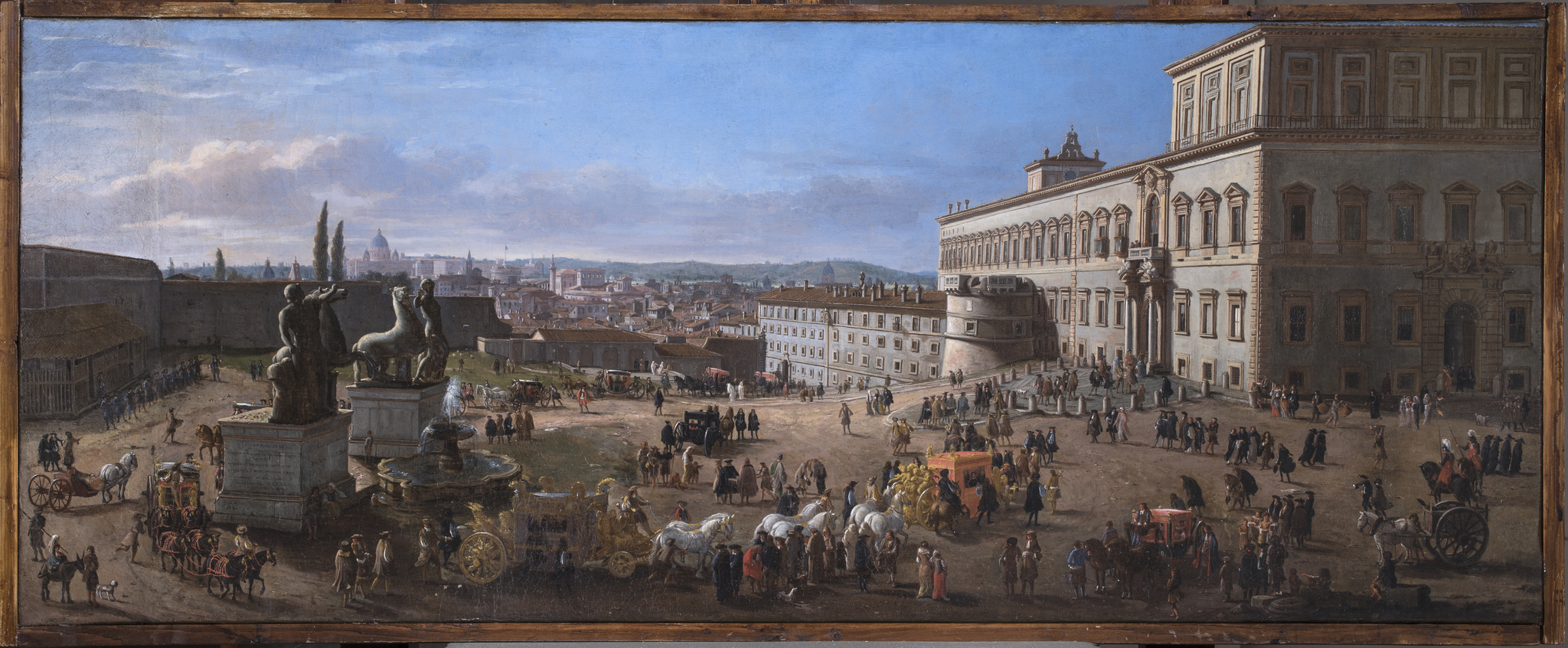In this research I have proposed that by adding two or more trumpets to some movements of Corelli's concerti grossi Opus 6, we can recreate – to a good extent – the soundscape of the Roman Sinfonie con trombe common in Rome around 1700. It has been explained how the term Sinfonia was used with two different meanings in the Roman documents of the time as it could either indicate a group of instrumentalists or an instrumental composition. As almost no scores of instrumental music written for this type of ensembles have come to us, recreating the soundscape of Roman Sinfonie con trombe implies not only building an ensemble similar in its architecture to the orchestras that were playing there, but also to identify, and perform, music in the style of the instrumental compositions of the time. Arcangelo Corelli is, beyond any doubt, the musician most connected with the practice of the Roman Sinfonie around 1700 and we have proof not only that he was leading these Sinfonie - the instrumental ensembles - but also that he was composing the music performed - hence, the Sinfonie in the alternative meaning of the word. If on the one hand we have abundant evidence that these Sinfonie often included two trumpets (and sometimes more than two), on the other hand we have very few scores that can give us some cues about what these Sinfonie sounded like. However, the lucky existence of the Introduzione e Sinfonia of the oratorio Santa Beatrice d'Este by Lulier (the only original Corelli Sinfonia survived) and the different versions of the instrumental movements included in Handel’s two Roman oratorios Il Trionfo del Tempo e del Disinganno and La Resurrezione (composed in 1707 and 1708 respectively and in which Corelli was playing as first violin), can help us to formulate some hypotheses. These hypotheses should of course be taken with the benefit of the doubt, but at the same time they seem quite realistic from a rational perspective. Indeed, one can deduct from the above-mentioned examples, that Corelli's Sinfonie were probably structured with more than one movement of contrasting character and that they were written in a concerto grosso style. Moreover, one can observe what kind of writing the trumpets were assigned when playing with a string orchestra. From all the above arguments and speculations, and guided by my own musical taste, I have composed extra trumpet parts and I have added them on top of the original writing of some movements of Corelli's concertos from his Opus 6. The musical result can be heard on the audio and video material included in this paper.
Obviously, both the process of composing new parts and the musical decisions that were taken in the preparation of the final public performance, have added a strong subjective element to the outcome of the research. Indeed, one cannot escape the fact that a musical performance is the result of a chain of events and insights, some planned beforehand, some improvised, some even unforeseeable, that crystallise in a specific moment of space and time. As a matter of fact, it is perhaps worth stressing once more that, although based on musicological facts and documents, this is an artistic research and not a purely scientific one. Overall, even if one accepts the theory that some movements of Corelli's Opus 6 are some of his lost Sinfonie, or at least that they contain a good deal of the musical material of those scores, guessing how these compositions sounded, and what kind of trumpet parts they included, is largely an act of speculation.
Next to more objective facts such as sound balance between the different instruments of the orchestra, playability of the new parts, etc, the artistic result of an applied musicological theory – one that has a strong influence on a musical practice – cannot disregard its aural result and its reception by the listeners. In a broader perspective, I believe that the element of personal judgement is not to be rejected as one of the criteria to assess a work of art. As a consequence, I propose that personal impressions and opinions about the aural outcome of this experiment could be considered as an extra element contributing to the assessment of my proposal. For this reason, an anonymous survey was carried out with the direct and indirect participants to the project, i.e., to musicians playing in the orchestra and to the audience. Interestingly, not only the aural result of the research has been unanimously judged convincing, but some of the answers collected recalled the XVII century's descriptions of the events in which Corelli's Sinfonie were originally heard.
Despite the lesson that can be learned from Agatha Christie's books, i.e., that a series of clues can establish a proof, I will refrain from claiming to have answered the question “what were Corelli's trumpets playing in the Roman Sinfonie around 1700.” Hopefully, in the future, more documents and newly discovered scores will give us more information about this practice, and they will clarify aspects that remain unclear so far. However, Gentile lettore, gracious reader and patient listener 77. by delving into the controversial matter of the use of winds – trumpets in particular – in Roman instrumental music around 1700, and by proposing some practical experiments in which two and more trumpets sound together with a string orchestra, I hope to have contributed to the exploration of one of the most fascinating periods of Baroque Music, and of its soundscape.
